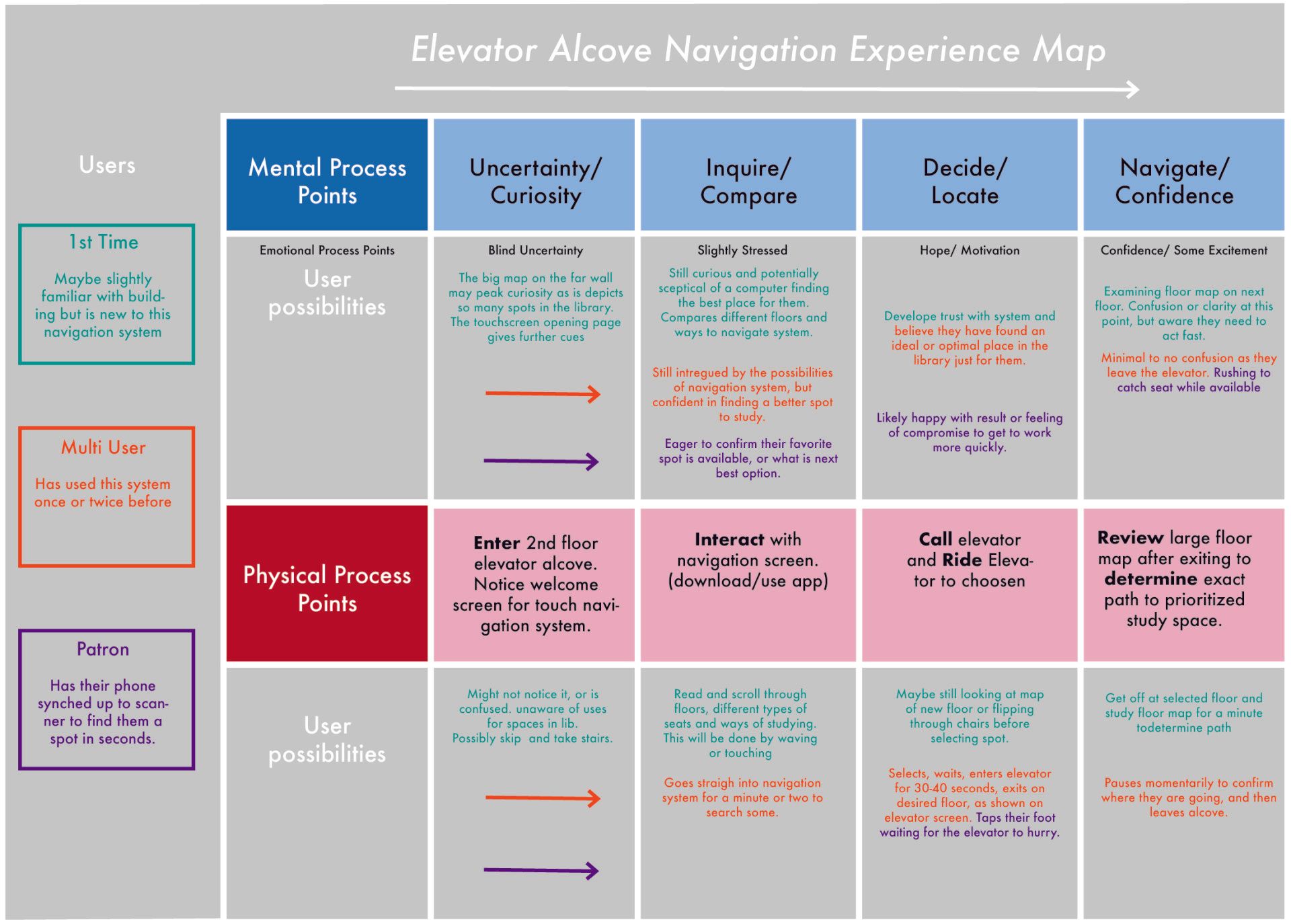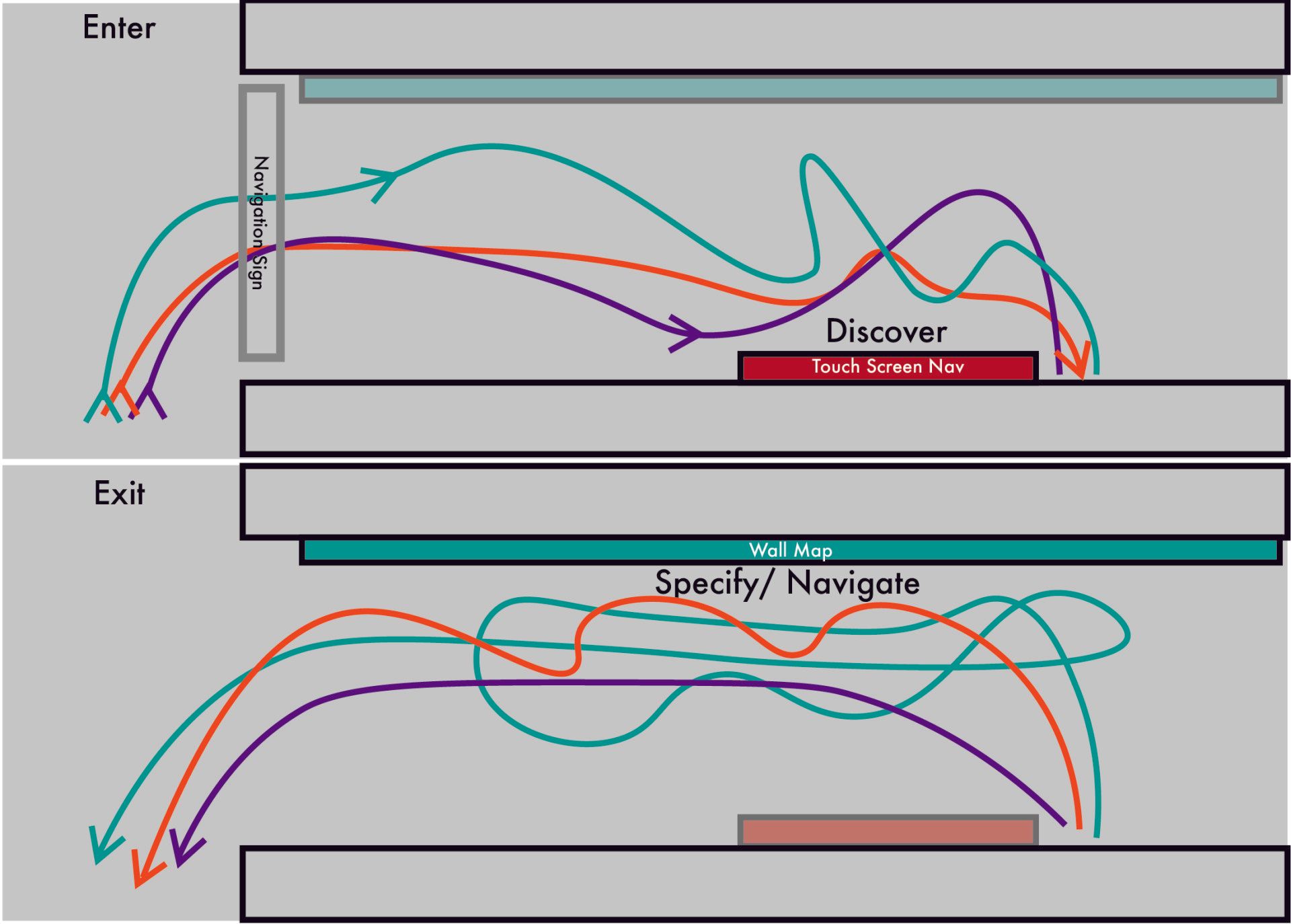interactive nav/info space
How can multi-dimensional media be integrated to redefine and repurpose a space to engage and inform visitors, while prioritizing community oriented spaces of learning?
the goal
At North Carolina State University's Hunt Library, visitors are usually in a rush but waste time inefficiently searching for a work space, and waiting for elevators is wasted time.
My objective was to turn the area just outside the elevators into a “Just In Time” pro-interaction base for visitors to access the information they need to most efficiently determine and navigate to, their next destination in minimal time.
research methods & process
observational research
To understand the flow of the library and discover opportunities, I spent a combined 6 hours at various times over the course of a week interviewing and observing how visitors used the building ands its spaces.
- On average visitors using the elevator spent
35-70 seconds waiting for the elevator. - Roughly 50% of visitors used the elevator.
- Most visitors knew the layout of the building and had a favorite spot to do work.
–
–
pain point ID & journey mapping
Developing a solid understanding of how visitors used the space, I was able to explain the potential mental and physical process of visitors using an early touchscreen concept. I differentiated the users by their frequency of use and accepted how that would inform overall design.
Target Audience:
- Geared towards an inquisitive university student motivated to increase productivity of their time spent in library. Ages 17+.
Values:
- New and better use of elevator alcoves
- An experience destination for repeat visitors
- More consistent use of more remote study rooms
- Less wasted time for visitors searching around
- Less distraction for people in study rooms or desks with fewer people wandering around
- Easier navigation for persons in wheelchairs
- Fits well with the high-tech experience of Hunt Library
- Motion sensors in each room would aid safety and security efforts
- Geared towards an inquisitive university student motivated to increase productivity of their time spent in library. Ages 17+.
- New and better use of elevator alcoves
- An experience destination for repeat visitors
- More consistent use of more remote study rooms
- Less wasted time for visitors searching around
- Less distraction for people in study rooms or desks with fewer people wandering around
- Easier navigation for persons in wheelchairs
- Fits well with the high-tech experience of Hunt Library
- Motion sensors in each room would aid safety and security efforts
mock ups & prototyping
Prototyping for this space within a multi-sensorial environment, requires rapid iterations to project the feel of the space. By building a model of the space and clips of potential UI visuals, I was able to shift and envision the experience within the confines of the alcove. This is a fantastic tool in the beginning stages of UX/UI design. From here mock ups of my favorite iterations allowed for a clearer vision of the visual tools and interaction elements in the space.




















